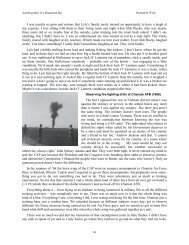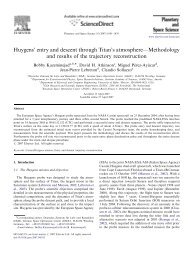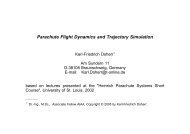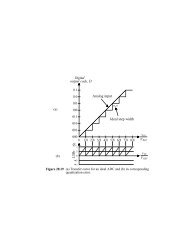THERMAL DESIGN AND PERFORMANCE OF PROBES IN THICK ...
THERMAL DESIGN AND PERFORMANCE OF PROBES IN THICK ...
THERMAL DESIGN AND PERFORMANCE OF PROBES IN THICK ...
You also want an ePaper? Increase the reach of your titles
YUMPU automatically turns print PDFs into web optimized ePapers that Google loves.
Temperature (C)<br />
150<br />
100<br />
50<br />
0<br />
-50<br />
-100<br />
-150<br />
Taero<br />
Shelf T1<br />
Shelf T2<br />
Ambient<br />
Elect<br />
Galileo Probe ASI<br />
0 500 1000 1500 2000 2500 3000 3500<br />
Time (s)<br />
Figure 6. Galileo Temperatures from the ASI instrument – most of the probe system equipment such as<br />
computer and batteries most closely follows the benign shelf temperature T1.<br />
Temperature (C)<br />
55<br />
35<br />
15<br />
-5<br />
-25<br />
-45<br />
-65<br />
-85<br />
Huygens Descent<br />
0 2000 4000 6000 8000 10000 12000<br />
Time from T0 (s)<br />
Figure 8. Huygens Probe temperatures (external sensors saturated at -80C) Notice the DISR sensor head<br />
temperature rises after impact (at 8870s) due to the drastic reduction in convective cooling on the ground.<br />
Internal temperatures (battery, transmitter) show a small change in slope at this time but are always benign.<br />
Skin<br />
DISR sensor<br />
Battery 3<br />
Mortar<br />
Transmitter









